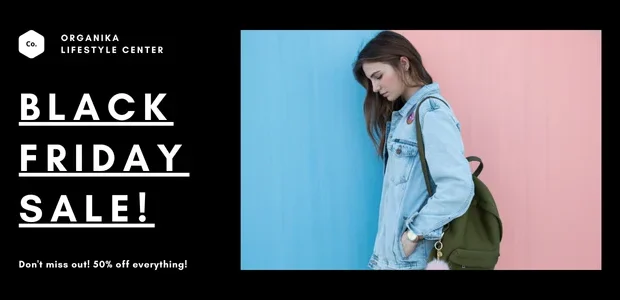
In the ever-evolving world of beauty, few brands have managed to revolutionize the industry quite like Sephora. From its humble beginnings in France to becoming a global beauty powerhouse, Sephora has not only reshaped how people buy makeup, skincare, and fragrances but also how they experience beauty.
Today, Sephora is more than just a store—it’s a culture, a community, and a leader in inclusivity, innovation, and customer experience. This blog takes a deep dive into the journey of Sephora, its impact on the beauty industry, and how it continues to set new standards for what beauty truly means.
The Origin Story: Where It All Began
Sephora was founded in France in 1969 by Dominique Mandonnaud. The brand name is said to be a combination of “sephos” (Greek for beauty) and the name “Zipporah,” the wife of Moses known for her beauty in the Bible.
What set Sephora apart from the beginning was its open-sell concept—a radical departure from the traditional department store model, where products were locked behind counters and only accessible through sales staff. At Sephora, customers were invited to touch, test, and explore products freely, creating a shopping experience that was both empowering and enjoyable.
In 1997, Sephora was acquired by LVMH (Moët Hennessy Louis Vuitton), a move that helped catapult the brand onto the global stage. Under the luxury conglomerate’s umbrella, Sephora expanded rapidly across Europe, North America, Asia, and the Middle East.
Global Footprint and Market Domination
Today, Sephora operates over 2,700 stores in more than 35 countries, including flagship locations in beauty hubs like Paris, New York, and Shanghai. It also maintains a strong online presence, making it easy for customers worldwide to shop from a carefully curated selection of over 300 beauty brands, including its own Sephora Collection.
The brand’s global dominance is backed by its savvy ability to adapt to local markets while staying true to its international brand identity. For example:
-
In India, Sephora tailors its skincare and makeup ranges to suit local skin tones and climate needs.
-
In Korea, a country known for advanced skincare, Sephora stocks leading K-beauty brands and exclusive collaborations.
More Than Makeup: A Multi-Category Experience
Sephora is often referred to as a beauty wonderland, and for good reason. The retailer offers products across six major categories:
-
Makeup: From cult-favorite foundations to limited-edition palettes, Sephora’s makeup aisles are a haven for beauty lovers.
-
Skincare: Whether it’s a luxury serum or a clean beauty face wash, the skincare section is curated to meet all skin types and concerns.
-
Fragrance: Sephora offers an impressive range of perfumes—from classic designer scents to niche and indie fragrances.
-
Haircare: Tools, treatments, and top-tier shampoos from brands like Olaplex and Dyson make haircare a major category.
-
Bath & Body: A luxurious mix of self-care essentials from scrubs to bath oils.
-
Tools & Brushes: Sephora is home to high-performance tools, including its in-house line that offers pro-level brushes at affordable prices.
Inclusivity and Representation in Beauty
One of the most commendable aspects of Sephora’s success is its commitment to diversity and inclusion. In a world where the beauty industry has long favored certain skin tones and beauty ideals, Sephora has actively worked to change the narrative.
Key Initiatives:
-
Fenty Beauty Launch (2017): The launch of Rihanna’s Fenty Beauty at Sephora, with 40+ shades of foundation, became a landmark moment in beauty. It not only set sales records but also set a new standard for inclusivity.
-
15% Pledge: In 2020, Sephora became the first major retailer to commit to the 15% Pledge, dedicating at least 15% of its shelf space to Black-owned brands.
-
Beauty for All: Sephora regularly updates its branding and marketing campaigns to feature people of all genders, ages, skin tones, and sizes, celebrating the full spectrum of beauty.
Technology Meets Beauty: The Sephora Digital Experience
Sephora has always been at the forefront of integrating technology with beauty retail. Its digital strategy is robust, customer-centric, and constantly evolving.
Key Innovations:
-
Virtual Try-On (Sephora Virtual Artist): Shoppers can use their phone camera to try on lipsticks, eyeshadows, and more—virtually.
-
Skin Analysis Tools: AI-powered tools provide personalized skincare recommendations based on selfies and quizzes.
-
Augmented Reality (AR): In-store AR mirrors help customers visualize how products will look before buying.
-
Sephora App: With features like mobile checkout, loyalty tracking, and personalized suggestions, the app makes the shopping experience seamless.
Loyalty, Rewards, and Personalization
Sephora’s Beauty Insider loyalty program is one of the most successful in retail. It offers a tiered structure—Insider, VIB (Very Important Beauty Insider), and Rouge—based on spending.
Benefits Include:
-
Birthday gifts
-
Early access to sales
-
Free makeovers and consultations
-
Points-based rewards (redeemable for deluxe samples and exclusive products)
This program not only boosts customer retention but also personalizes the experience, making every customer feel like a VIP.
Sustainability and Social Responsibility
As global awareness about environmental impact grows, Sephora has made strides in becoming more sustainable and socially responsible.
Green Efforts:
-
Clean at Sephora: A badge given to products free from harmful ingredients like sulfates, parabens, and phthalates.
-
Eco-Friendly Packaging: Many Sephora Collection products now feature recyclable or minimal packaging.
-
Sustainable Sourcing: The company works closely with brands that prioritize ethical sourcing and cruelty-free testing.
Challenges and Competition
Despite its massive success, Sephora faces competition from multiple fronts:
-
Ulta Beauty: Sephora’s biggest rival in North America, known for its mix of high-end and drugstore brands.
-
Direct-to-Consumer (DTC) Brands: Brands like Glossier, Drunk Elephant, and The Ordinary have strong DTC followings that challenge traditional retail models.
-
Online Retail Giants: Amazon, with its convenience and growing beauty category, is a serious contender.
However, Sephora’s strength lies in its experience-driven retail model—something few others can replicate.
The Future of Sephora
Looking ahead, Sephora continues to invest in sustainable growth, digital transformation, and global expansion. Some notable future-focused moves include:
-
Expanding into emerging markets like Southeast Asia and Latin America.
-
Launching more private label and exclusive brands.
-
Investing in AR/VR tech to make online shopping even more immersive.
-
Enhancing personalized AI recommendations for a tailored beauty experience.
Conclusion: A Beautiful Legacy in the Making
Sephora is more than a beauty retailer—it’s a global movement redefining how we see, experience, and celebrate beauty. With a legacy rooted in innovation, inclusion, and customer obsession, Sephora has transformed itself from a French fragrance shop into a global beauty empire.
Whether you’re a makeup enthusiast, skincare novice, or just someone who loves discovering new products, Sephora offers more than just beauty—it offers empowerment, choice, and joy.
In a world that’s constantly evolving, Sephora remains a trusted companion on every beauty journey—and that’s what makes it truly iconic.
